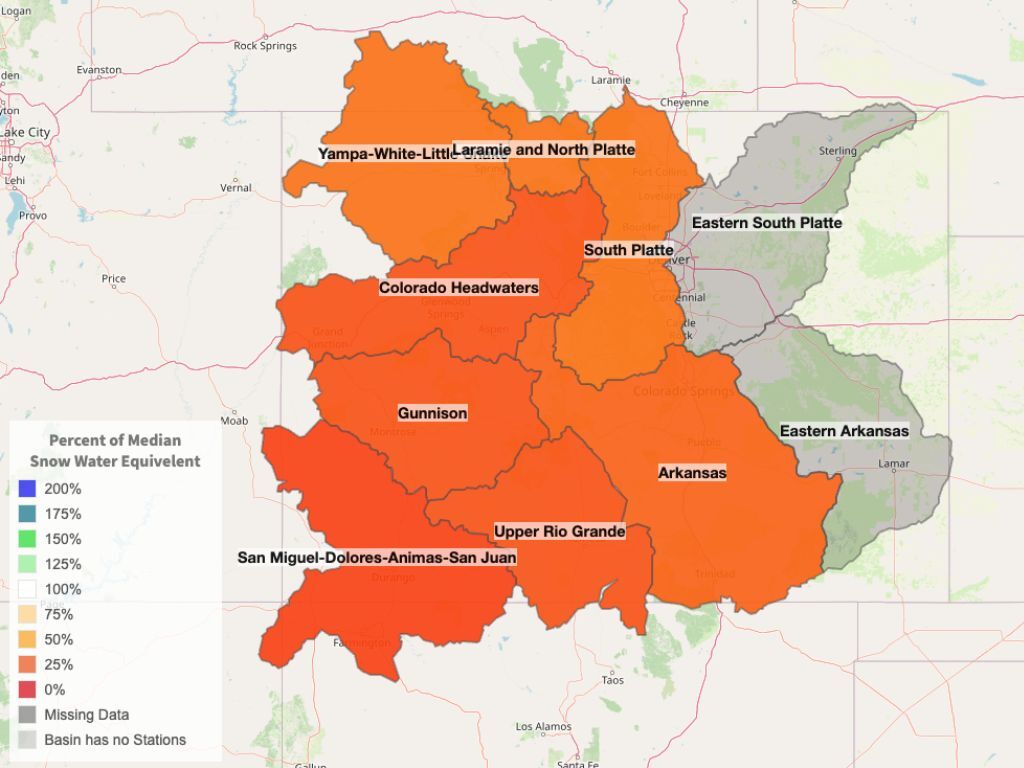Colorado region at just 11% of typical snowpack for the date

It’s been a dry start to the snow season thus far in Colorado this fall, and while a storm that’s in the forecast later this month could mean two-plus feet of snow, most of the state is seriously lacking in terms of snowpack.
Statewide, Colorado’s snowpack is at just 26 percent of the norm for November 3, with southwest Colorado’s San Miguel-Dolores-Animas-San Juan River Basin at just 11 percent of what’s typical.
Here’s a look at how snowpack varies by region compared to the long-term norm for the date. Data comes from the daily USDA report:
Arkansas River Basin (southern Colorado): 20 percent of norm
Colorado Headwaters River Basin (western Colorado, north of Grand Junction): 26 percent of norm
Gunnison River Basin (western Colorado, south of Grand Junction): 25 percent of norm
Laramie and North Platte River Basin (northern Colorado): 32 percent of norm
San Miguel-Dolores-Animas-San Juan River Basin (southwest corner of state): 11 percent of norm
South Platte River Basin (northern Front Range): 31 percent of norm
Statewide: 30 percent of norm
Upper Rio Grande River Basin (southern Colorado): 20 percent of norm
Yampa-White-Little snake River Basin (northwest Colorado): 24 percent of norm
In other words, all tracked regions of the state are significantly behind snowpack norms for the date. That said, it’s still quite early and a single storm (like the one that may hit mid-November) could mean big changes in the situation. It’s also worth noting that the lack of early season snow could – could – end up meaning a safer situation in terms of avalanche risk, as a weaker layer of old snow might not be present in many places prior to when more consistent winter snow starts to fall. This weak base of early-season snow can sometimes be a factor in causing snowpack to slide.
Obviously, drought is a relevant part of the conversation, too, as less snow can mean more intense dryness. As of October 28, 49.36 percent of the state was ‘abnormally dry’ or worse, with 29.20 percent of the state experiencing drought.
Even amid the general lack of snow, it’s still important to check the Colorado Avalanche Information Center report prior to leaving the trailhead behind. Avalanche conditions can change rapidly, and these changes can result in deadly conditions. Find that report here.
Get OutThere
Signup today for free and be the first to get notified on new updates.






